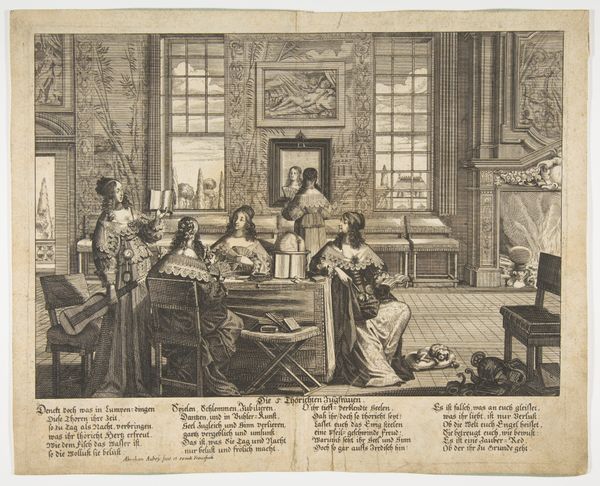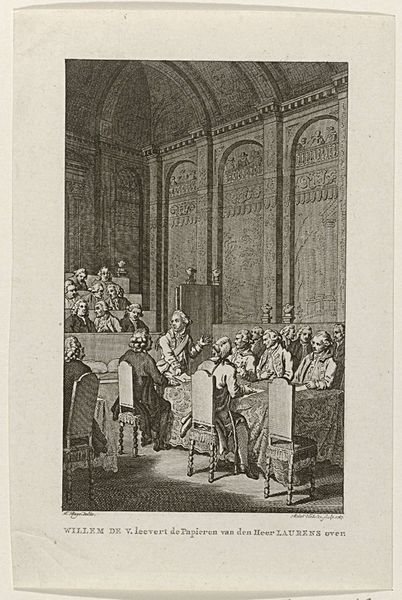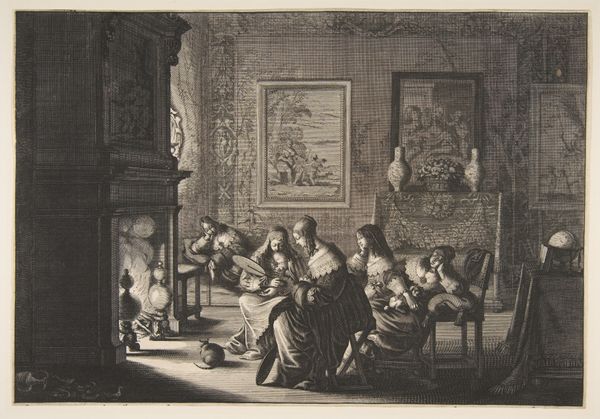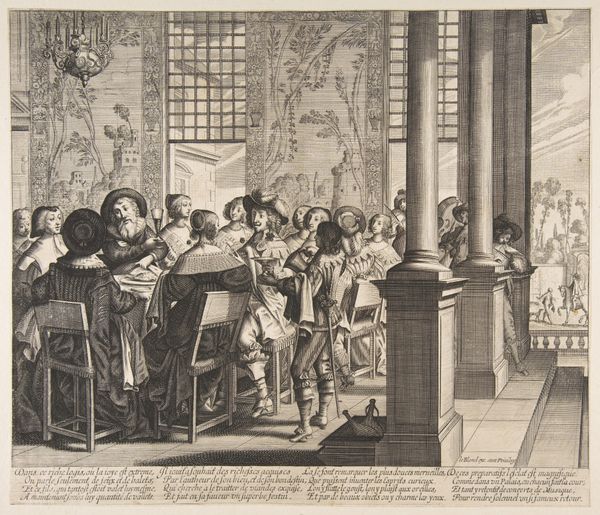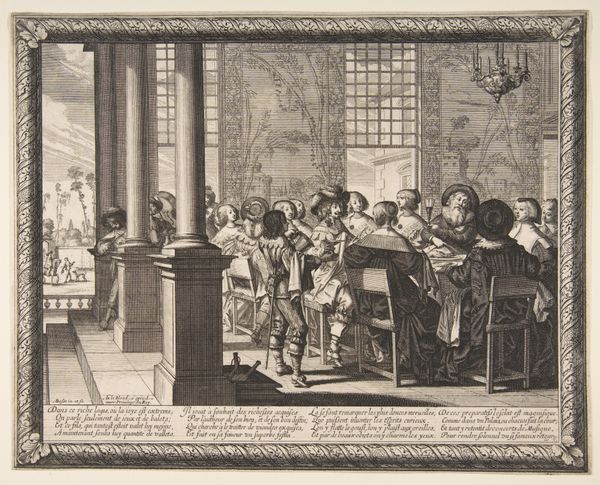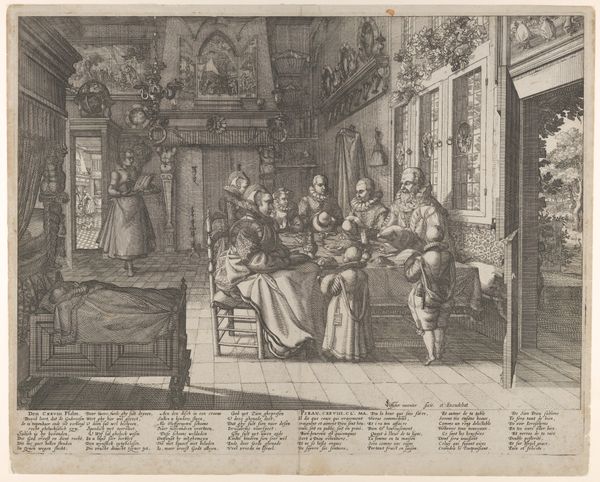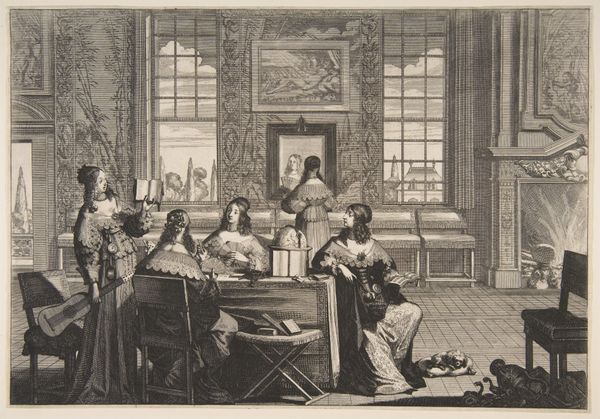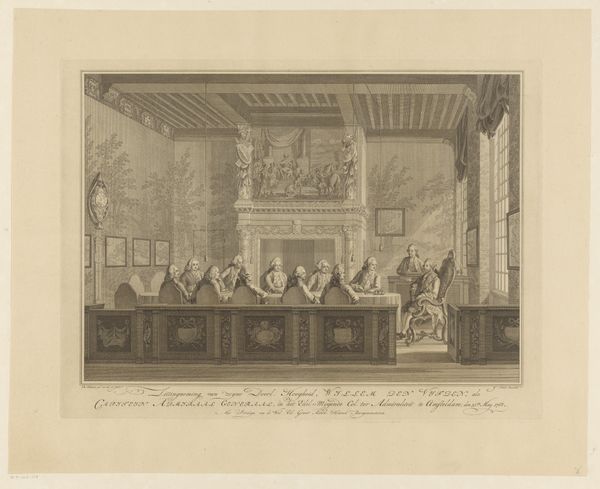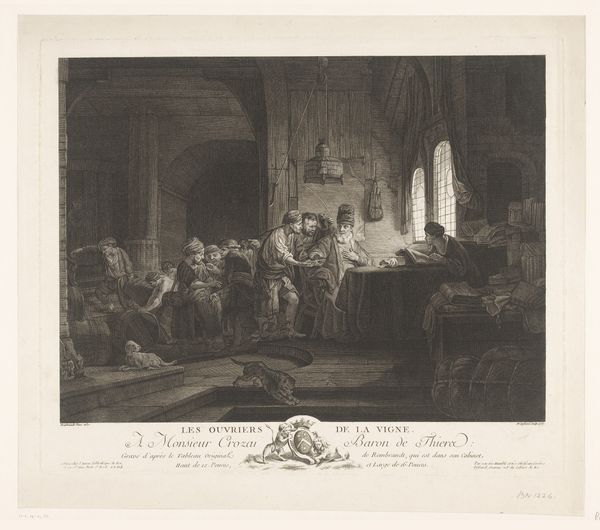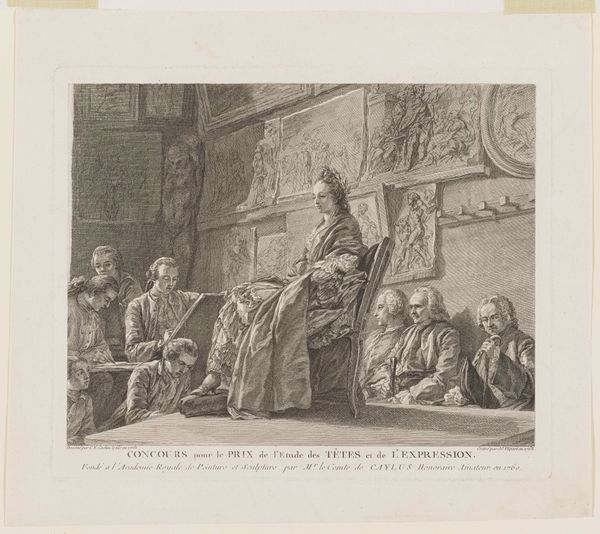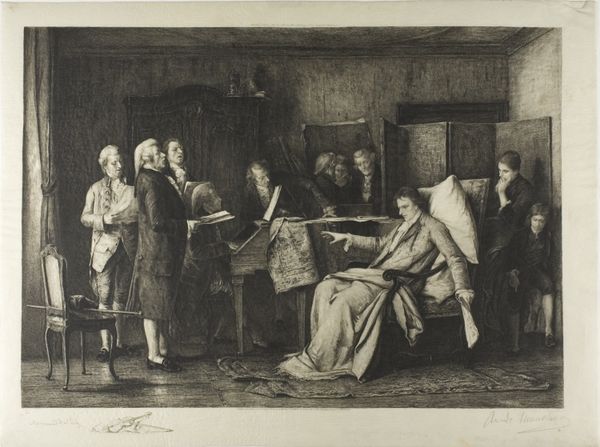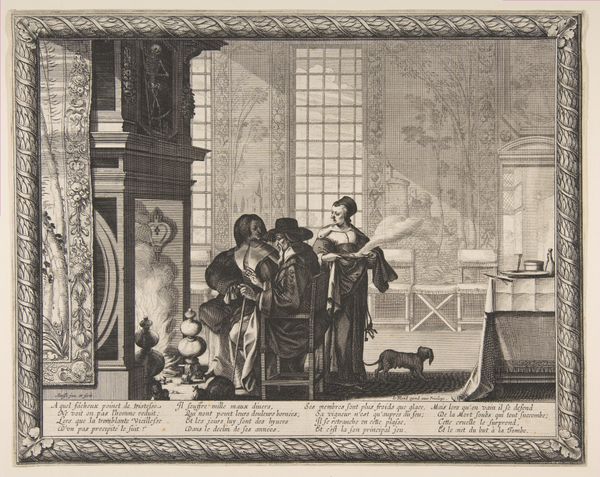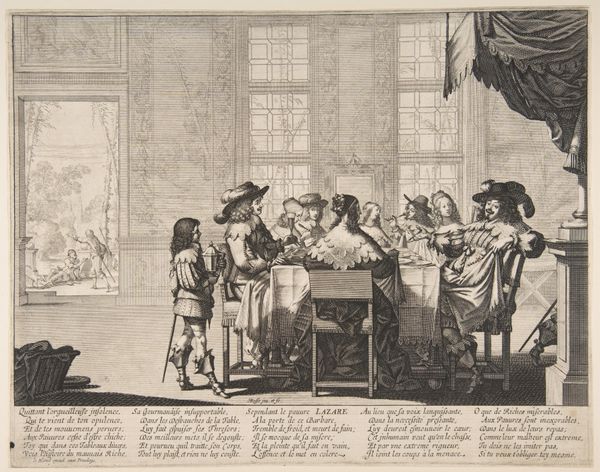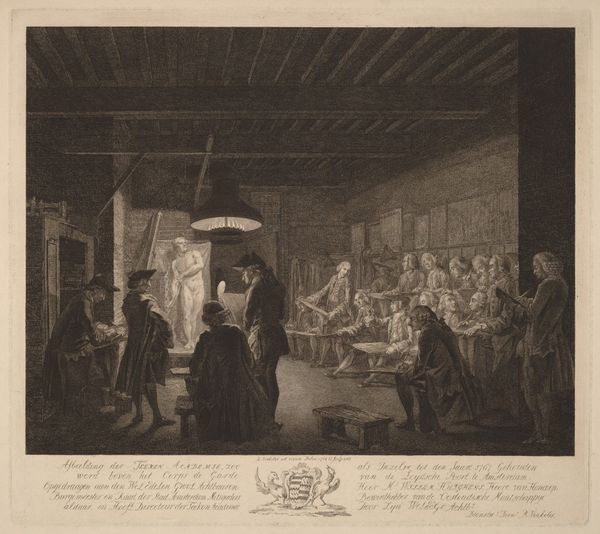
The Wise Virgins Resting Whilst Awaiting the Arrival of The Husband 1630 - 1640
0:00
0:00
drawing, print, etching, paper, engraving
#
portrait
#
drawing
#
aged paper
#
narrative-art
#
baroque
# print
#
etching
#
landscape
#
figuration
#
paper
#
historical fashion
#
cross
#
line
#
genre-painting
#
history-painting
#
engraving
Dimensions: Sheet (trimmed): 10 3/16 × 12 13/16 in. (25.8 × 32.5 cm)
Copyright: Public Domain
Curator: This engraving, “The Wise Virgins Resting Whilst Awaiting the Arrival of The Husband" by Abraham Bosse, created sometime between 1630 and 1640, depicts a scene of women in a domestic interior. It is currently held at the Metropolitan Museum of Art. Editor: It’s such a contrast of light and shadow. The figures are so meticulously rendered, and it feels very staged. What do you see in this piece, looking at it through a historical lens? Curator: What immediately strikes me is the socio-political context within which Bosse was working. France in the 17th century was a society deeply shaped by religious and moral codes. Notice how the print’s inscription frames these women as virtuous figures, awaiting their "celestial spouse." Editor: So, it's not just a domestic scene; it's conveying a moral message? Curator: Precisely. Prints like this played a key role in shaping public morality. They were easily disseminated and interpreted within specific social frameworks. We might ask, for example, how did such images reinforce or challenge existing power structures related to gender and religion? Note how they contrast with the frivolous ladies outside that the inscription alludes to. Editor: I see what you mean. It's like visual propaganda for a particular social ideal. What’s with the dramatic contrast between light and shadow, almost like theatrical lighting? Curator: That use of light aligns with the prevailing Baroque aesthetic, creating drama and emotional intensity, but it also emphasizes the clear division between darkness – worldly concerns – and light, the divine. Editor: It's fascinating how an image can be so much more than just what's on the surface, mirroring the values of society at that time. I’ll definitely look at engravings differently from now on! Curator: Exactly. By analyzing these historical contexts, we start to unpack the cultural work these images performed. I've certainly considered how religious themes in the Baroque era may seem overtly moral, but truly, everything produced in culture during those periods of reform in religion should be seen as promoting political agendas in visual format.
Comments
No comments
Be the first to comment and join the conversation on the ultimate creative platform.
